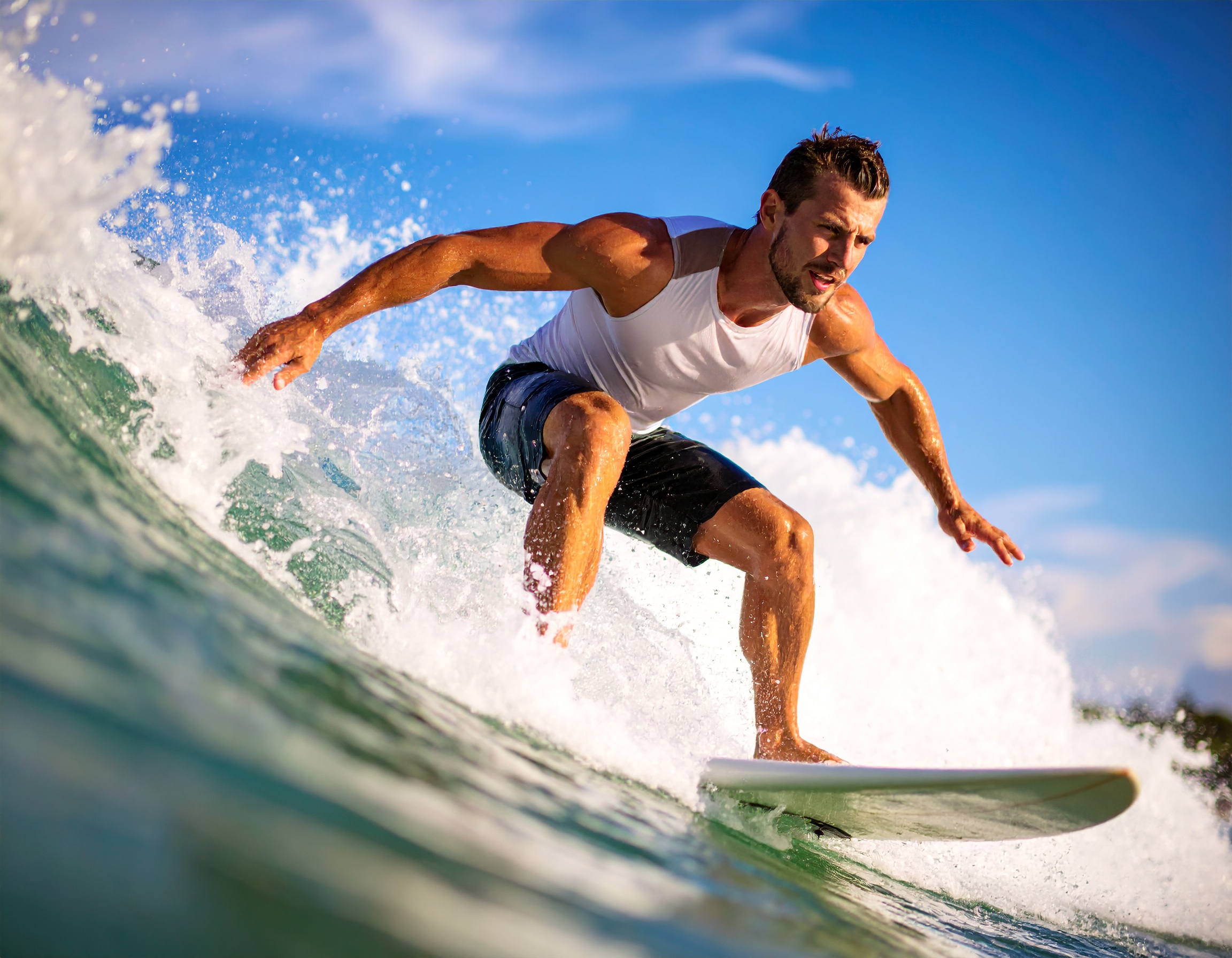Text
Catching the big wave
1
Dolphins do it and people do it as well – surfing the waves. Floating
2
over the ocean’s waves is an adventurous game dolphins had been
3
playing long before humans even existed. Some researchers think
4
that dolphins ride the waves not only for fun but also to establish
5
social relationships and communication within their groups. Others
6
speculate that they simply use the power of the waves to get rid of
7
parasites and clean their skin.

8
Human surfing dates back to Polynesian cave paintings from the 12th century. In the
9
course of seafaring, Polynesians brought surfing to Hawaii where the sport gained
10
popularity among people of all ages and social status. In their early history it was
11
essential for Hawaiians to choose the right trees for shaping their surfboards.
12
In addition, religious rituals were practised during the building process to ask the gods
13
for the riders’ protection. So, religion played a significant part in Hawaiian surfing.
14
These days, surfing is a sport not only done by people living close to the sea. “It’s only
15
a quick flight and everybody can reach the top surf spots worldwide,” surf trip organizer
16
Alex White says, “all kinds of people book my trips – some even several times a
17
year. Actually, surfing seems to be pretty addictive.” Boris Huckson, a businessman
18
and passionate surfer from Australia, confirms this statement. “It’s something that’s
19
hard to put into words. It’s you and the perfect wave. Waiting for it and being focused on
20
myself and the ocean has a relaxing effect on me, which makes everyday life seem far
21
away. Then, when riding the wave, the adrenalin kicks in,” he explains.
22
Surfing has become a mass sport. It is estimated that there are about 50 million surfers
23
worldwide, spending up to $65 billion per year in international travel. According to a
24
survey in 2023, surfing is the third most practised nature-based sport in Australia, with
25
a participation of 3.2% of the adult population. The survey clearly shows that the
26
country’s regional economy along the coastlines profits from millions of dollars earned
27
through travel and the visitors’ surf gear purchases.
28
But with the rising popularity of water sports like surfing, their negative impact on
29
the marine environment is growing too. Surfboards, wetsuits, and other surf gear
30
commonly contain materials like oil-based chemicals and plastics, which can be toxic to
31
marine life if discarded or lost in the ocean. Plus, plastic waste carelessly left
32
behind on beaches by surfers very often ends up in the ocean and can be mistaken
33
for prey by marine animals. With their stomachs full of plastics, many of them starve.
34
Moreover, people surfing in tropical locations often walk over coral reefs to reach the
35
waves and thus damage the precious marine habitats.
36
In order to make the sport more environmentally-friendly, the surfboard industry
37
began to develop new boards based on recycled materials or natural fibres such as
38
wood or even mushrooms. And, the production of new wetsuits made from natural rubber
39
collected from trees in sustainable plantations creates 80% fewer CO₂ emissions than
40
neoprene, the oil-based synthetic rubber which most conventional wetsuits are made of.
41
In the UK, a surf company is even developing a wetsuit made from recycled neoprene
42
suits. In addition, many surfers have organized beach cleanups to care for the animals
43
and the environment.
44
So, surfing keeps moving forward as many surfers are aware that an intact environment
45
is essential when doing a sport so close to nature.
1 (581 words) 2 Adapted from:
- https://reporter.anu.edu.au/all-stories/what-are-our-waves-worth-surfing-economics-can-help-us-work-that-out (22.11.2023);
- https://www.bbc.com/news/science-environment-65563622 (22.11.2023);
- https://www.surfingeconomics.org/about/ (22.11.2023);
- https://tracksmag.com.au/whats-a-good-wave-really-worth-to-you (22.11.2023);
- https://www.surfertoday.oertoday.com/surfing/why-do-dolphins-surf-waves (22.11.2023);
- https://planetsurfcamps.co.uk/history-of-surfing/ (22.11.2023);
- https://www.dolphins-world.com/dolphin-evolution/ (22.11.2023);
- https://www.theguardian.com/global-development/2022/dec/26/seas-becoming-landfills-senegalese-surfer-saving-beach-from-plastic (22.11.2023);
- https://www.surfindonesia.com/plastic-waste-ocean/ (22.11.2023);
- https://www.pacificsurf.com/history-of-surfing-in-hawaii/ (21.01.2024);
- picture source: generated with Adobe Firefly KI